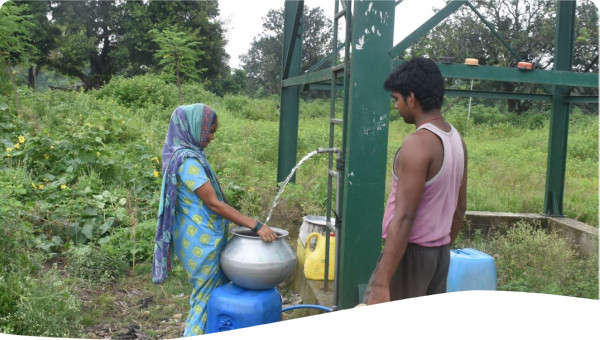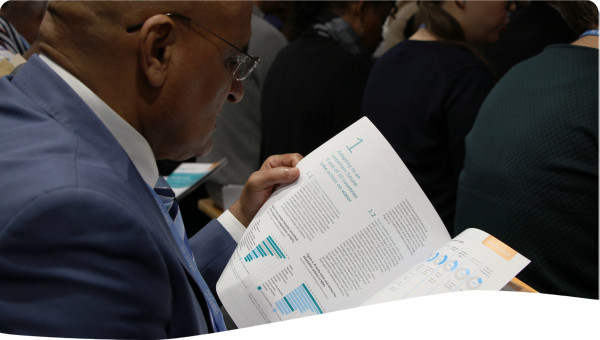In Uganda, the National Water and Sewerage Corporation (NWSC) provides most drinking water, however, predominantly in urban areas. Attempting to improve water provision in rural areas, a programme supported by the World Bank was initiated. The main action taken was to commercialising service delivery through public-private partnerships. Despite being viewed as a great success, this case highlights that circumstances can change and differ from those anticipated during the bidding stage.
Access to safe drinking water in Uganda is 67%. It is a slightly higher coverage than the regional average for Sub-Saharan Africa (about 60%). Delivery of drinking water is almost 90% in urban areas. This has been possible due to the fact that urban settlements in Uganda have two separate water delivery systems.
However, until the late 1990s all formal water supply systems, whether urban or small town, were managed by the Directorate of Water Development, an agency based in the Ministry of Water and Environment. Most water sector resources were anchored at the central or regional level of government, with little involvement of local authorities.
This heavy centralization led to challenges in many aspects of operations. For example, revenue from water sales had to be remitted to the capital in Kampala in the form of central government revenue. Securing finance for local water supply became a slow process of requesting government funding.
The National Water and Sewerage Corporation (NWSC) is a public utility that provides water to 23 large towns including the capital, Kampala. Outside the remit of NWSC, water provision in small towns and rural growth centers is the responsibility of local authorities.
Since 2000, one of the conditions of the contractual framework has been that the local water authority subcontracts water system management to a private operator. Similar to the NWSC output-based aid scheme, the private operator receives a reimbursement of its investments. It is in the form of a subsidy by confirming that a planned number of connections have been installed and are fully operational.
By the late 1990s, a reform program supported by the World Bank and other donors set out to improve the system by separating asset ownership from system operations, and by commercializing service delivery through public-private partnerships. Water management at the local level was then delegated to local Water Authorities, which receive financial and technical support from the MWE.
Within the past five years, a further innovation has been introduced in small towns including informal settlements of Kampala with the piloting of a contract modality funded by output-based aid (OBA).
The OBA project is designed to provide water to low-income communities. This is implemented through the Urban Pro-Poor Branch of NWSC and follows a number of earlier donor-funded initiatives to reach poorer households. The OBA project funds the installation of private yard taps and pre-paid meters for public standpipes. Investments are financed by the NWSC in advance through its own funds.
Another OBA pilot program, initiated by the Uganda Government targets six small towns and four rural growth centers which have not previously had a piped water system. Under this OBA scheme, NWSC pre-finances the required investments to achieve the target for a certain number of connections defined in the OBA agreement, using internal funds.
Upon verification that the agreed targets have been achieved, NWSC is reimbursed by a pre-defined OBA subsidy. The utility uses in-house capacity and does not subcontract the implementation of the OBA project components. In addition, NWSC is planning to install pre-paid meters along with all future yard tap connections.
Introduction of reforms enabled NWSC to become one of the most successful water utilities in the region. This is partly attributed to the introduction of a Performance Contract between NWSC and the government, which introduces a set of performance benchmarks. Between 2005–2006 and 2008–2009, the number of connections increased by almost 50% and turnover by more than 70%.
The case study report reviews the role of the domestic private sector in the delivery of urban water in uganda, focusing on POs in small towns.
Since the introduction of the OBA scheme, some towns have seen a relatively rapid increase in the number of connections, while using less public funding than under traditional management contracts. However, the research shows considerable diversity of outcomes. In addition, it is problematic to attribute the results directly to the output-based mode of aid delivery since the scheme was associated with other modifications to the contractual framework. Among other things, a higher service fee and longer contract duration have provided incentives for private investment. Furthermore, the details of the sources of investment finance and destination of the subsidy are not as clear as proponents of OBA would suggest.
The delivery of water by pos in small towns in Uganda raises many of the same issues that have emerged in international debates on private sector participation in the delivery of water. Among other things, challenges include weak regulation, information asymmetries, selectivity, and short-termism. Furthermore, replication elsewhere is unlikely to be successful without consideration of the underlying structural and institutional reform conditions in Uganda. In particular, strong capacity within the ministry of Water and environment (MWE) to adapt the modalities of private sector engagement to changing circumstances has played a critical role.
Introduction of reforms enabled NWSC to become one of the most successful water utilities in the region, partly attributed to the introduction of a Performance Contract between NWSC and the government, which introduces a set of performance benchmarks.
Challenging cases where circumstances during implementation differ from those anticipated during the bidding stage show: the circumstances under which the contract is being implemented matter more – especially in towns where connections and piping extensions are the primary investment requirements.
The essence of the OBA program is that the service provider is paid only upon the delivery of pre-identified outputs which helped increasing access to safe water since the provider is compelled to deliver specific outputs to receive prompt payments.
The pre-paid meter system has eliminated disagreements over bills, enabling people to manage their expenditure on water more predictably and reducing water theft, as people with as little money can afford water or are able to buy water credit collectively.
The introduction of OBA has been associated with an increase in the number of connections and the speed of installation with lower government subsidy level.
 Case studies
Case studies




